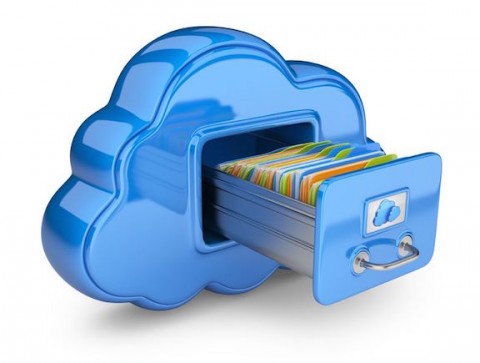“You’ve used about 75% of your 10GB data plan (cycle ends the 25th). Track usage or add 2GB to your plan for $30 more per month.”
Anyone with a data plan has received this message at one point or another, reminding them that they’ve probably downloaded way too many files. But what if it cost you only an additional penny per GB per month for the ability to take away up to 75% of your storage? Reclaiming your 75% includes identifying which files aren’t being accessed and moving them off to a shared and compressed environment – getting rid of a lot of email headaches – all while driving the cost down.
In yesterday’s online training, New Approach to Data Management, audience members learned a digitalized and agile approach can be a game changer when it comes to data. With data growing at an exponential rate, agencies often struggle to even keep up. There’s so much data they often cannot make sense of it. Digitizing and arching your enterprise data can help you classify and prioritize information for a better decision-making process.
Here are the top 5 take-aways from yesterday’s online training, which you can view on-demand here:
- NIH and NOAA collaboration
Willingness and motivation to work together across federal agencies reveals a global community in the data management enterprise. Phillip E. Bourne, PhD, the first Associate Director for Data Science at the National Institute of Health, discussed NIH’s most recent workshop on data practices with NOAA (National Oceanic and Atmospheric Administration) where it was revealed both organizations face similar problems; a mutual learning opportunity that goes to the international scale as well because of the open data policies in their organizations and ones of similar data collection methods.
Takeaway: When it comes to data management, you can never share enough best practices and agencies can certainly work together.
- Opportunities and challenges (that came from big data)
Bourne also addressed the findings (both good and bad) of the “digitalization of the biomedical health enterprise”. Challenges include the complexity of data NIH is currently dealing with, cultural challenges, problematic top down policies, and the need for more training programs. Sound familiar? On the other hand, an important opportunity, announced in President Obama’s most recent State of the Union address, is the revealing of precision medicine, defined as the turning-point in history where a patient is now the central focus of the healthcare system – taking, using, controlling, and now managing his or her own information.
Takeaway: there are many challenges when it comes to big data, but more importantly, many opportunities to improve government – NIH and other organizations are barely scratching the surface.
- Enterprise Archiving definition
Bill Duffy, the eDiscovery Sales Specialist for Symantec, explained how users archive their email unknowingly, making it not so divergent after all. Enterprise information archiving is defined as incorporating products and solutions for archiving user content (emails, files, text messages, etc.) and provides basic tools for eDiscovery.
Takeaway: archiving provides better indexing, discoverability and a cheaper way to manage a vast amount of storage.
- Email data statistics
Duffy also highlighted that the problem of big data always starts out small, .15mb, 10,000 emails or 1.5 GB to be exact. The problem is that, while the amount of emails people are sending year over year isn’t increasing, the average number of emails federal employees deal with are; 1.5 GB of email in their inboxes per year – a 1 GB mailbox quota from January to August. This increases to 120 TB for the mail, 120 TB for the DAG and 120 TB for the journal – 360 TB per year in an agency of about 80,000. Bill recommended Enterprise Vault Archiving to address the needs across the organization, from end user, legal or human resources, to compliance and IT management.
Takeaway: enterprise archiving can be the solution to this data management issue.
- Start with your stakeholders
Bourne recommended talking to your various stakeholders in the enterprise your dealing with, understanding their current and future needs, and coming up with use-cases that speak to those needs. This will drive the things you will implement, which you would evaluate how well they worked within the framework you designed and make adjustments accordingly, an agile approach that will allow you to initiate a better data governance strategy at your agency.
Takeaway: you cannot use a “if you build it they will come” approach when it comes to data management. Small pilots will evaluate if the current model will work and discover the constant and variables of any business model.
Learn more about the complexities of turning data into insights by viewing the on-demand version of the training here.






Leave a Reply
You must be logged in to post a comment.